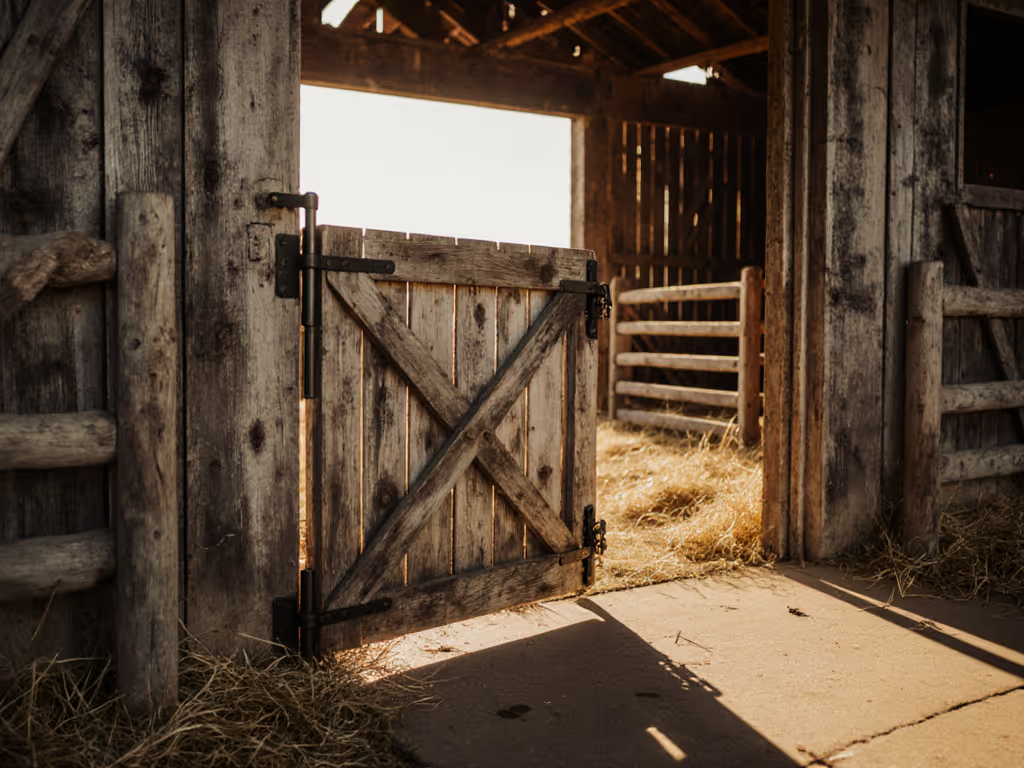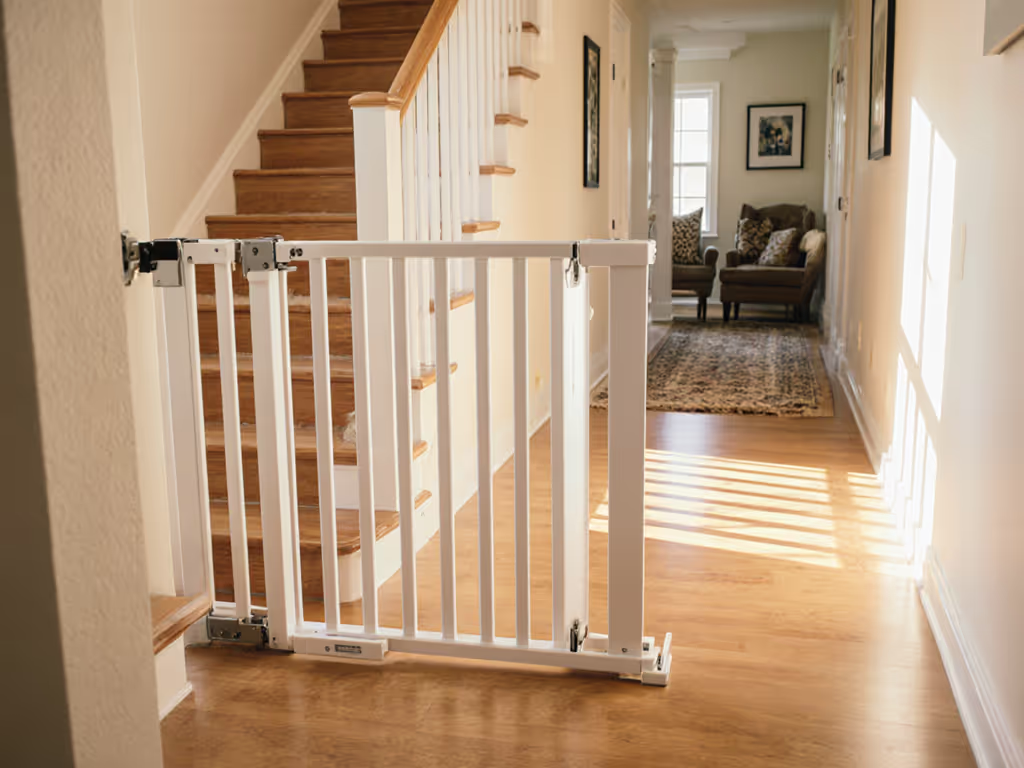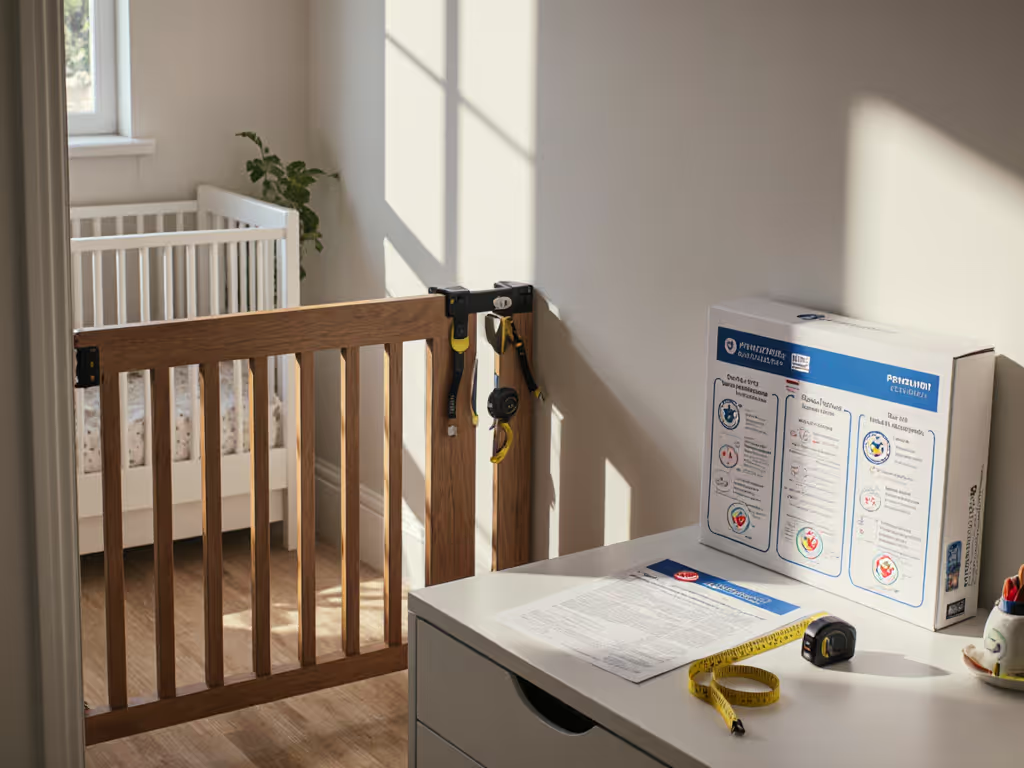
Baby Gate Stair Safety: Pressure Mount Myth Busted

When it comes to baby gate safety myths, few topics cause more confusion, and potentially dangerous decisions, than pressure-mounted gates at the top of stairs. Despite persistent gate safety misconceptions circulating online, the reality is simple: pressure mounts belong at the bottom of stairs, not the top. For a detailed comparison of mounting methods at stairways, see our pressure vs hardware guide. Let's clear up the confusion with facts that actually protect your little climber while keeping your home flowing smoothly.
Why pressure mounts can't be trusted at the top of stairs
You've probably seen well-meaning tutorials showing pressure mounts installed at the top of stairs "without drilling." Here's what those videos don't tell you: even the strongest pressure gate can shift under a toddler's full-body push. The ASTM F1004 safety standard (which all certified gates must meet) requires gates to withstand 45 pounds of downward force. But at the top of stairs, it's not just downward force we worry about. A determined toddler leaning forward creates a forward-and-downward force that can send the entire gate (and child) tumbling down.
"Make safety the default, not the exception, every day."
Hardware-mounted gates anchor directly into wall studs or banisters, distributing force safely. Pressure mounts rely on friction alone, a gamble with catastrophic consequences if that friction is lost. Consumer Product Safety Commission data show stair-related falls account for over 15,000 ER visits annually among toddlers, with improper gate installation as a leading factor.
"But I'll just check it constantly": why vigilance isn't enough
Many parents tell me they'll "just be extra careful" with pressure mounts at the top. Here's the hard truth: caregiver fatigue is real. When you're carrying groceries one-handed, soothing a sick child at 3 AM, or distracted by a pet underfoot, that's when the gate shifts unnoticed. Low-friction safety habits beat high-vigilance requirements every time.
I remember working with a family whose grandmother kept missing the latch until we moved the handle to her dominant side and set the swing direction away from the step-down. We practiced one-handed closes during snack time, and safety became automatic within days. That's the power of designing for real life, not perfect conditions.
Gate certification realities: Beyond the "safe" label
Just because a gate says it's safe doesn't mean it's right for your staircase. Look for:
- JPMA certification (meets ASTM F1004 standards)
- 22-inch minimum height (verified by measurement, not just packaging claims)
- Clear top-of-stairs warnings (reputable brands explicitly state pressure mounts aren't for upper landings)
Many "pet gates" sold online skip these critical safety tests. True child safety gates undergo rigorous testing for head entrapment, structural strength, and latch reliability, and pet gates often don't. Check for the CPSC's Children's Product Certificate (CPC) marking; it's non-negotiable for infant safety products.
Visual safety vs actual safety: The dangerous gap
Ever installed a gate that looked secure but sagged after a week? That's visual safety: it appears safe but fails under real-world use. Actual safety means:
- Zero bottom gap (pass the "coin test": if a quarter fits under the gate, a baby's head can fit through)
- Stable mounting points (no wobble when pushed at the top corner)
- Automated closing (gates that swing shut reliably)
Pressure mounts often pass the visual test initially but fail the actual safety test over time as tension loosens. Hardware mounts maintain consistent tension, so no daily adjustments are needed.
Outdated gate risks: That "still good" gate from your older sibling
Gates manufactured before 2017 may lack modern safety features like:
- Double-action latches (requiring two motions to open)
- Reinforced top rails (to prevent climbing)
- Bottom brackets (eliminating tripping hazards)
The ASTM standard updates every few years based on incident data. An older gate might meet past standards but fail current ones, especially regarding head entrapment risks. Check your gate's manufacture date; if it's more than 5 years old or shows any wear, replace it.
Creating low-friction safety habits that stick
The best gate is the one that gets used correctly every time. Simplify your routine with these caregiver-proof steps:
- Anchor your habits: Install gates where closing requires minimal steps (e.g., swing direction matches natural traffic flow)
- Design for differences: Adjust latch height for varying caregiver heights, so grandparents don't need to bend awkwardly
- Add visual cues: A small sticker on the latch reminds distracted adults it needs full engagement
- Practice with purpose: Spend 60 seconds daily practicing one-handed closure while carrying something (like your phone)
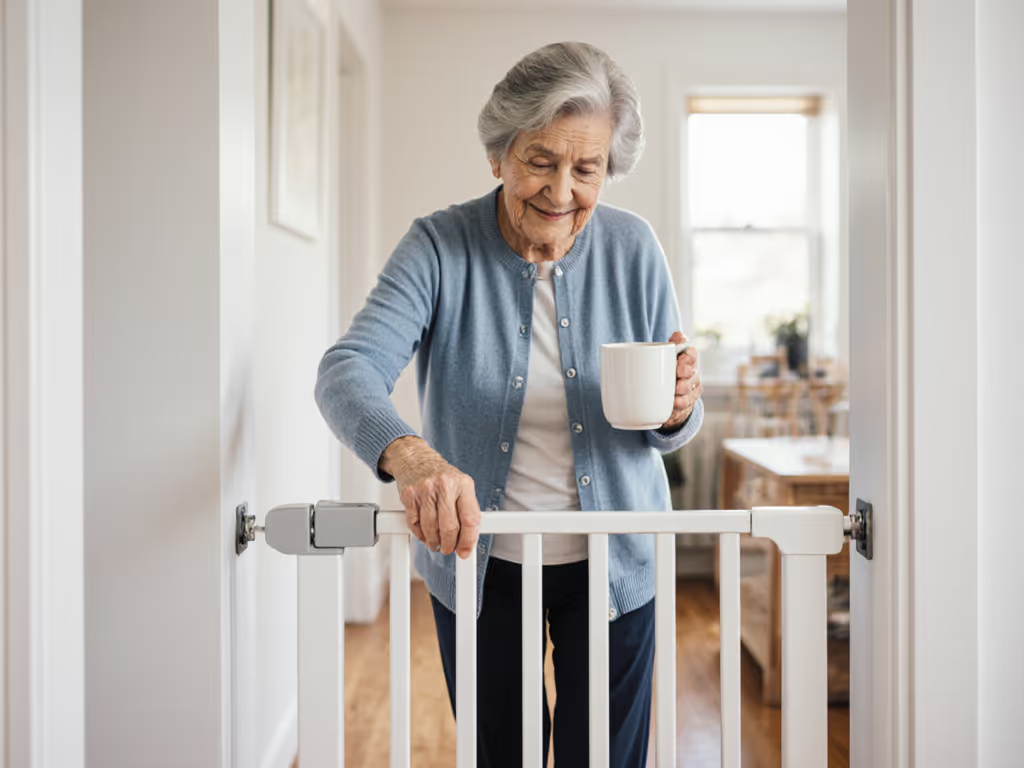
Pressure mount stair safety truth: When they do work
Pressure mounts have their place, and they're perfect for:
- Bottom-of-stairs barriers (where a fall risk is minimal)
- Room dividers in living areas
- Temporary zones during visits to non-childproofed homes
Just never (ever) use them at elevated drop-offs. If your rental prohibits drilling, look for hardware-mount kits with banister clamps (no wall penetration needed), or use painter's tape to mark where to reinstall the hardware after moving out.
Your actionable next step
This weekend, perform a 5-minute gate safety check:
- Top-of-stairs gate? → Immediately replace pressure mounts with hardware-mounted versions For top-landing specifics and recommended models, use our Top of Stairs Gates guide.
- Lift test → Stand centered and lift upward with 10 pounds of force, and if it moves, it's unsafe
- Gap check → Ensure no space larger than 3.5 inches exists anywhere
- Latch practice → Time how many seconds it takes to close correctly (aim for under 3 seconds)
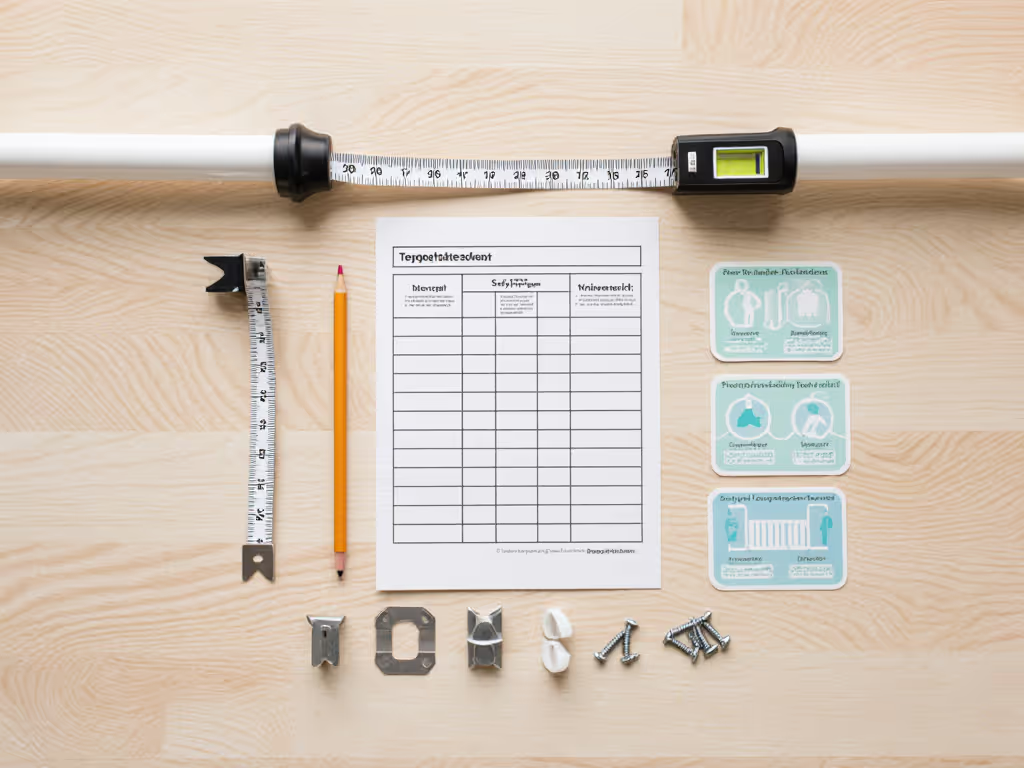
Write down what you find. If anything fails, prioritize fixing it before your next busy morning. Safety isn't about perfect gear, it's about habits that work when you're tired, distracted, or rushed. Practice builds safety until it becomes muscle memory, not another chore on your list.
Remember: The goal isn't just preventing falls today. It's creating a home where you can breathe easy while your little explorer gains confidence, because that's when the real learning happens.

